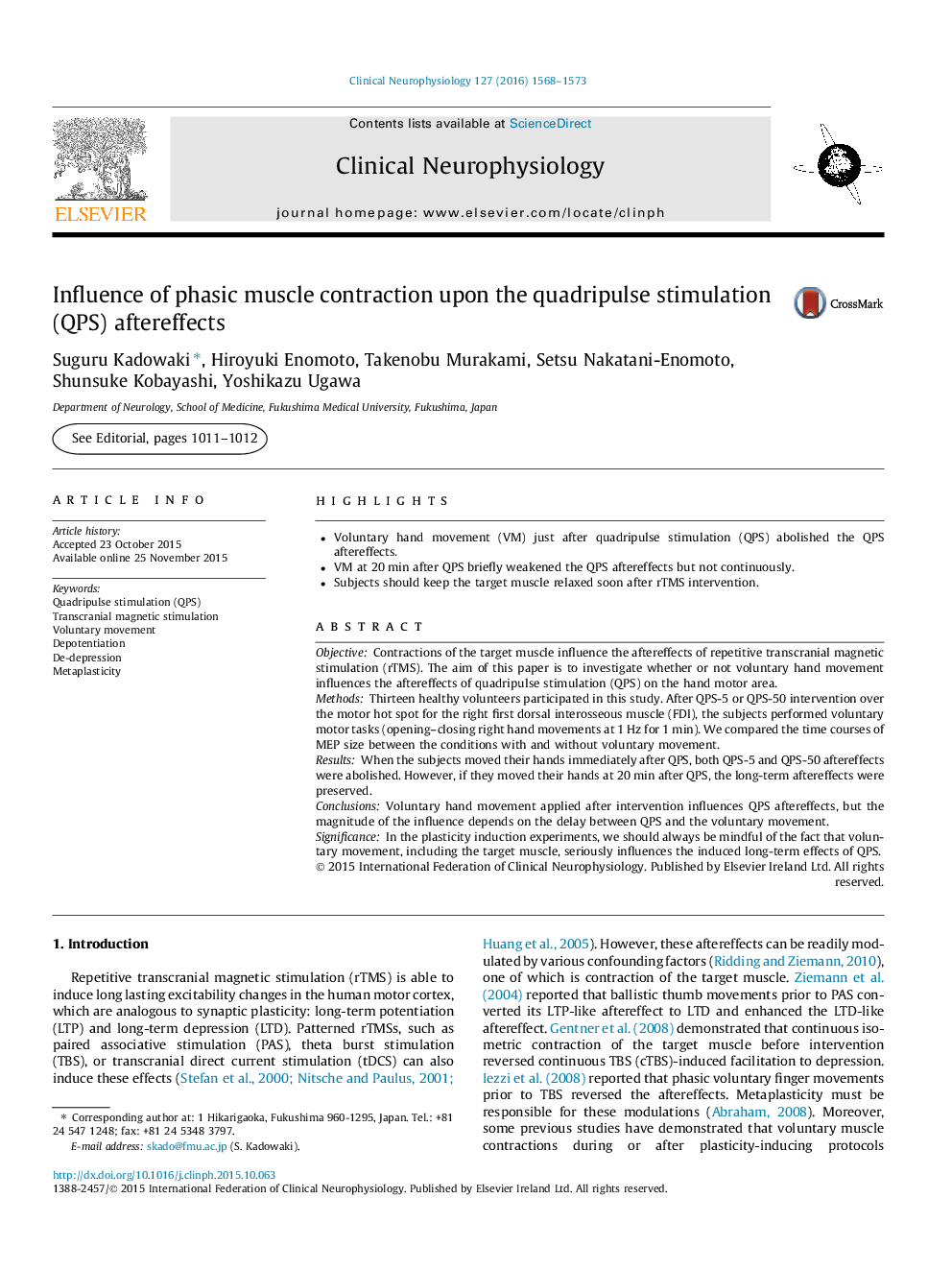| Article ID | Journal | Published Year | Pages | File Type |
|---|---|---|---|---|
| 6007658 | Clinical Neurophysiology | 2016 | 6 Pages |
â¢Voluntary hand movement (VM) just after quadripulse stimulation (QPS) abolished the QPS aftereffects.â¢VM at 20 min after QPS briefly weakened the QPS aftereffects but not continuously.â¢Subjects should keep the target muscle relaxed soon after rTMS intervention.
ObjectiveContractions of the target muscle influence the aftereffects of repetitive transcranial magnetic stimulation (rTMS). The aim of this paper is to investigate whether or not voluntary hand movement influences the aftereffects of quadripulse stimulation (QPS) on the hand motor area.MethodsThirteen healthy volunteers participated in this study. After QPS-5 or QPS-50 intervention over the motor hot spot for the right first dorsal interosseous muscle (FDI), the subjects performed voluntary motor tasks (opening-closing right hand movements at 1Â Hz for 1Â min). We compared the time courses of MEP size between the conditions with and without voluntary movement.ResultsWhen the subjects moved their hands immediately after QPS, both QPS-5 and QPS-50 aftereffects were abolished. However, if they moved their hands at 20Â min after QPS, the long-term aftereffects were preserved.ConclusionsVoluntary hand movement applied after intervention influences QPS aftereffects, but the magnitude of the influence depends on the delay between QPS and the voluntary movement.SignificanceIn the plasticity induction experiments, we should always be mindful of the fact that voluntary movement, including the target muscle, seriously influences the induced long-term effects of QPS.
